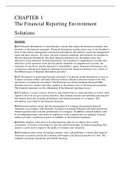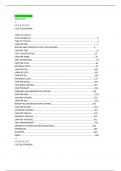Tentamen (uitwerkingen)
Solution Manual For Intermediate Accounting 3rd Edition by Elizabeth A. Gordon, Jana S. Raedy, Alexander J. Sannella
- Vak
- Instelling
Solution Manual Intermediate Accounting 3rd Edition by Elizabeth A. Gordon, Jana S. Raedy, Alexander J. Sannella Immediately available after payment Both online and in PDF 100% Money Back Guarantee
[Meer zien]





